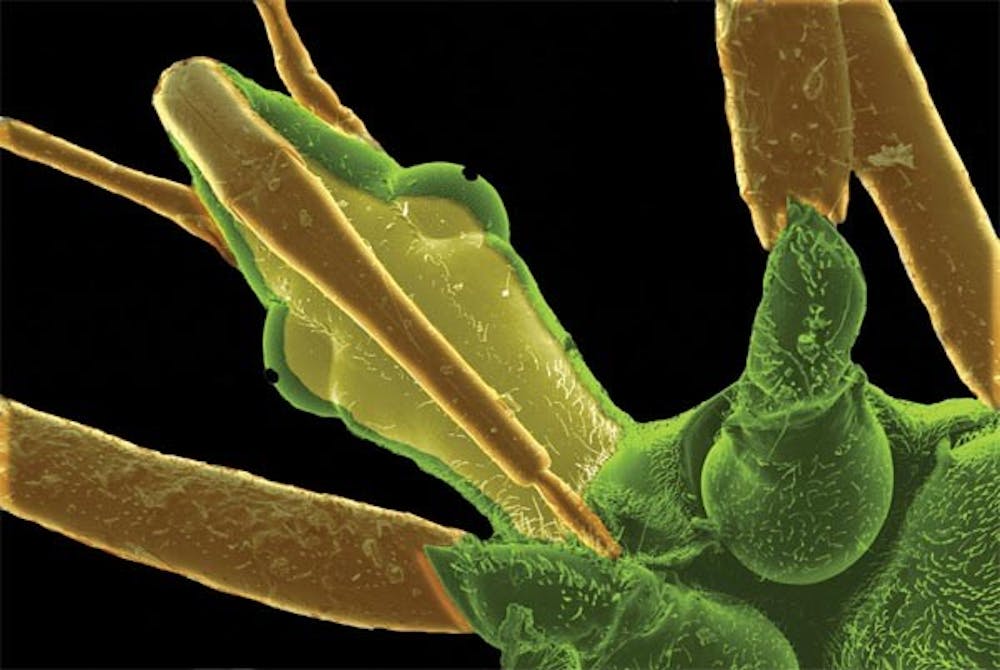ASU is asking the public to vote again — only this time, the choices are supposed to be ugly.
“Ask A Biologist,” ASU’s question-and-answer biology website, is continuing its tradition and hosting its third annual “Ugly Bug Contest,” where visitors to the site can make one insect’s dreams come true by electing it the “Ugliest Bug” of 2010.
Candidates in this year’s race include the fearsome Assassin Bug, the grotesque Jewel Wasp, the predatory Yellow Dragonfly and the always-frightening Earwig.
Voting began Oct. 15 for the 10 hopefuls and ends Dec. 15.
“It’s a fun way for people to learn about insects,” said Charles Kazilek, director of technology integration and outreach for the School of Life Sciences and creator of “Ask A Biologist.”
Kazilek and researchers from both ASU and Northern Arizona University selected the 10 candidates out of more than 1 million confirmed species of insects.
The contest, first created by Marilee Sellers of NAU in 1997, took to the web in 2007 in order to reach a larger audience. ASU and NAU collaborate on the project.
Last year, more than 8,000 total votes were tallied.
The contest is very visual, and each insect on the website went through a long process to get its picture to the public, Kazilek said.
After each bug was selected to participate in the race, it was then sent 160 miles to NAU in Flagstaff to be scanned by an electron microscope.
Therry The, a research associate at NAU, took black and white images of each insect for the contest with the electron microscope, which he has done for the past three years.
“You can see all the detail — things that wouldn’t show up in a common microscope,” The said.
After the they were scanned, he sent the insects all the way back to ASU and into the hands of research scientist Page Baluch. She then colorized the images and posted them to the website for everyone to see their ugliness.
Baluch argues that the insects are not “ugly” — she finds them fascinating.
“These bugs are really cool,” Baluch said.
A name change has been considered, Kazilek said, but because the contest has gone by the same name for more than 10 years, the name has stuck. Kazilek can’t think of an alternative name that is equally catchy, he said.
“We can’t call them beautiful bugs,” Kazilek said.
The Snakefly, a fly with an elongated body, was crowned “Ugliest Bug” of 2009, while the parasitic tick won in 2008.
The fearsome assassin bug is leading polls on Nov. 7 with 1,098 votes. Its name alone helps it garner votes, Kazilek said.
The Assassin Bug, found near all types of plants in warm climates, injects toxic saliva into its prey, usually ants or termites. The saliva digests the victim’s insides, which the assassin bug then sucks out for nutrients.
A rare subfamily located in South America can even transmit the potentially fatal Chagas disease.
In second place with 777 votes is the very alien-looking Yellow Dragonfly, with its big red eyes and large mouth. It is Kazilek’s favorite for “Ugly Bug” of 2010, he said.
Found around lakes and streams, it lives up to five years and hunts everything from tiny mosquitoes to full-grown butterflies.
After taking an early lead with more than 400 votes, the Jewel Wasp has fallen to fourth place behind the earwig and has stagnated at 520.
The wasp feeds on flies and cockroaches and is found near decaying tissue. It lays its eggs inside a living host, and when the eggs hatch, the infant wasps eat the host from the inside out.
Voting numbers have increased each year since 2008, and Kazilek has big plans for the future, hoping to intensify the election parallel next year by creating fake political advertisements for each candidate, he said.
“We have an outstanding class [of insects] this year,” Kazilek said. “Make sure you get out and vote.”
Reach the reporter at alex.ferri@asu.edu





